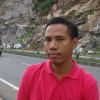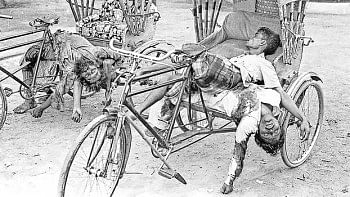98.6pc poor severely affected by Covid-19


The Covid-19 pandemic has severely affected 98.6 per cent of the poor, who have seen a decline in income, loss of jobs, the closing of shops and business activities and even a complete halt of income, a study finds.
Although the country is facing economic hardship, only a few respondents of the survey have changed their occupations, which implies that it is not easy to get new jobs.
The study on the 'Impacts of Covid-19 on food-intake and nutrition of poor people: a rapid appraisal' was conducted by the Right to Food Bangladesh, a platform of food security campaigners. Poor people have also been suffering from insufficient food supply, according to the study.
Nearly 87 per cent of the poor have been facing hardship to arrange adequate food and nutritious food supplies. Even 5 per cent of the poor lived on one meal a day during the countrywide shutdown in April and May.
The shortage of food is relatively high in Mymensingh and Sylhet compared to other divisions. The nutritional status of the poor, especially children, pregnant women and lactating mothers, is at stake now.
Half of the poor received some forms of assistance -- dry food, cash, or cooked food -- from the government or private sector.
"The government should expand support to the poor, encourage the private sector to come forward with more related programmes," said Prof Dr Qazi Kholiquzzaman Ahmad, chairman of the platform.
"During the pandemic, we have noted how important it is to have a law for ensuring the right to food," said Ahmad, also chairman of the Palli Karma-Sahayak Foundation (PKSF).
The principal aim of this quick appraisal was to understand the situation of livelihoods, food consumption and the nutritional status of the poor people living in different parts of Bangladesh as a result of the Covid-19 pandemic, he said.
The study also wanted to explore the awareness status of poor people amid the health risks of coronavirus. With these objectives, a short survey was conducted among 834 poor people from 37 districts, covering all divisions.
Rickshaw and van drivers, scooter and taxi drivers, transport workers, small shopkeepers, road or pavement vendors, barbers, beauty parlour workers, garbage collectors, part-time housemaids, workers in small workshops, street vendors, individual or commercial drivers, freight workers, carpenters, e-commerce delivery workers and agricultural workers were included in the study.
Many of these workers mostly get paid daily, so they survive one day at a time. The survey also included some respondents from jobless people like beggars, street children and physically challenged people.
To control the spread of coronavirus, the government announced a general holiday of all economic and social activities in late March and it continued for more than a month.
Although businesses opened on a limited scale in early May, the economic activities have remained at a sub-optimal level, according to the study.
Those who changed the occupation have mostly become day labourers and agricultural labourers as it is relatively easy to start working with. About 70 per cent took these new occupations for survival.
However, the agriculture workers were able to manage works during the pandemic as the period of general holiday was the harvesting time of boro, the major rice crop of Bangladesh.
The coronavirus-induced livelihood losses have caused damage to the income of poor people, said Nazneen Ahmed, senior research fellow of Bangladesh Institute of Development Studies, who led the study.
"As these people have minimal savings or no savings at all, a downturn in their income is bound to have extended negative impacts on their food intake and nutritional status."
Since the outbreak of the epidemic, both government and private sector people have come forward with various types of help for the poor and vulnerable, she said.
Such programmes include the distribution of cash, food and cooked food, she said.
It is noted that in the pre-pandemic situation, 91.6 per cent of the respondents used to take three meals a day, and the remaining used to take two meals a day.
Though most of the respondents used to have three meals a day, during the general holiday, 95 per cent to 100 per cent of the respondents of different divisions faced problems to maintain three meals a day.
In all divisions, poor people mainly suffered from a shortage of sufficient food and a severe lack of nutritious food. Nearly 87 per cent of poor people faced hardship to manage adequate food, the study also found.
The poor in Rangpur region suffered the most from the food crisis, and Rajshahi region suffered the most from the nutritious food crisis.
Low-income families are in the food supply problem, which has exposed their families to nutritional and health risks.
In the last three months, the health risks of Covid-19 could be minimised by maintaining social distance, wearing masks and following some basic hygiene at home and outside.
It was found that all respondents of the study knew about the coronavirus.
The study recommended that various government initiatives to support the poor should be made available to the poor people in urgent need of food.
The transfers of money, including various social protection benefits, should be sent regularly to the beneficiaries through mobile financial services.
It also suggested ensuring supply of nutritional food for children.
Various stimulus packages announced by the government for micro, small and medium enterprises and informal sector enterprises should be implemented immediately. This would ensure livelihood opportunities for many poor people working in these enterprises.

 For all latest news, follow The Daily Star's Google News channel.
For all latest news, follow The Daily Star's Google News channel. 



Comments